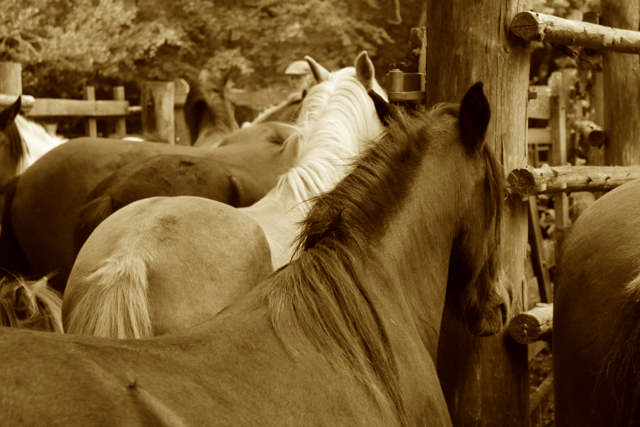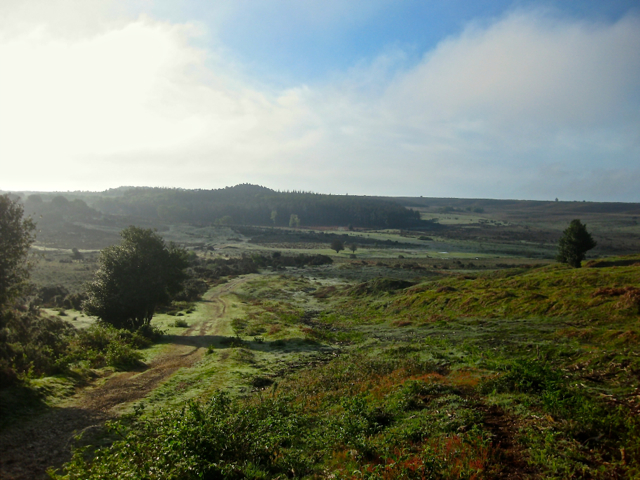
Diseases, such as rabies, were a constant concern for farmers and commoners of free roaming stock.
In July 1826 it was reported in the newspapers that a six-year old child had died of hydrophobia, the dread disease otherwise known as rabies. The child and his mother were walking alone in the New Forest when a rabid dog attacked them, biting the boy’s face. The dog was chased into Fordingbridge that same day, where it was duly killed. Sadly, the little boy developed the disease and died within a month of the attack. Rabies, once widespread in Britain, is a viral disease that affects domestic and wild animals, and is usually spread through the bites and scratches of infected people and animals. Symptoms include hyperactivity, excited behaviour, increased production of saliva and the tell tale hydrophobia (fear of water). In times past the threat of rabies was often met with panic because people didn’t really understand its causes. As a result there were no effective public health policies to target the disease and with many dogs let free to roam in villages, towns and cities it was impossible to contain and so the spread of rabies continued unchecked.
Dog-days and mad dogs
In a series of letters, printed in the Southampton Herald during 1837, Southampton veterinary surgeon W. C. Spooner recommended public health strategies to prevent the disease, such as controlling the number of stray or loose dogs. He advised against killing dogs on account of them having fits, as this occurrence was not always caused by rabies, and recommended keeping alive dogs suspected of the disease to see if they actually developed the symptoms. Keeping a suspected ‘mad dog’ until it either developed rabies or did not, he believed, would greatly assist the victims of its bite in knowing if they were in danger of later contracting the disease. Spooner argued that rabies was not caused by hot weather during the ‘dog-days’ (hottest days of the year), which was a widely held belief because rabies seemed so prevalent in the Mediterranean and desert countries. Any animal bite he recommended to be cauterised, excised or treated with silver nitrate, rather than using some of the remedies that had come to his attention, such as bathing in the sea at Southampton and dog owners cutting a tendon on the underside of a young dog’s tongue as a form of disease prevention. (Interestingly, the World Health Organisation recommend washing the bites and scratches, caused by infected animals, thoroughly for a minimum of 15 minutes with soap and water as a first response treatment for rabies.)
The Dogs Act 1871
In 1877 a rabid dog attacked children in a school in Shirley, which resulted in the death of a nine-year-old girl. The doctor giving evidence at the coroner’s court remarked on the high numbers of cases he had attended in the area where people had been bitten by dogs. The coroner at the girl’s inquest called for the local authorities to address the issue of the great number of dogs roaming at large in the town. Prompted by the attack and the subsequent death of the little girl, Spooner wrote to the newspapers again, under the pseudonym ‘Prophylactic’. It would seem that his previous advice had gone unheeded and he had actually been ridiculed for his beliefs in the prevention and treatment of rabies. By this stage in his life he was an eminent veterinarian and author of many books about animal husbandry, breeding horses and the agricultural capabilities of the New Forest. He repeated the information he had provided 35-years earlier and begged that people take notice. Nevertheless, the tide of public (and scientific) opinion was turning in his favour. Whilst no one in and around the area seemed aware that in 1871 The Dogs Act had been passed, local authorities had been given power, under Section 3 of the Act, to seize, sell or destroy stray or loose dogs. At last the scourge of rabies was beginning to be addressed nationally. The discovery by Louis Pasteur of a rabies vaccination in l885 and a series of Government-led public health initiatives finally enabled Britain to declare itself rabies-free in 1902.

Britain was first declared rabies-free in 1902.


You must be logged in to post a comment.